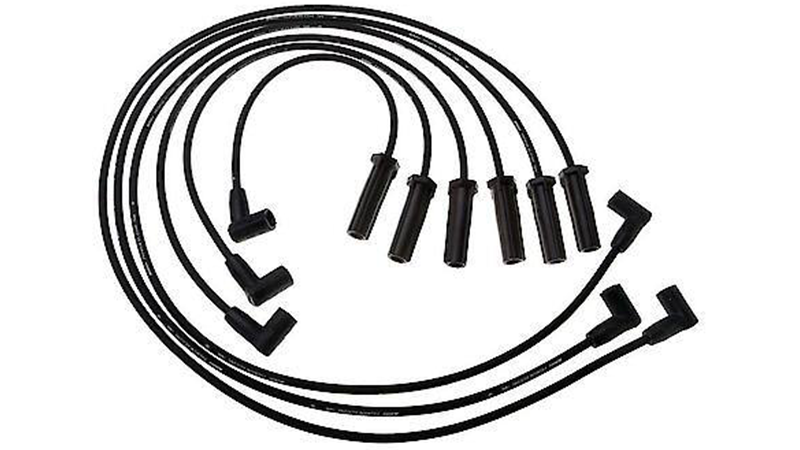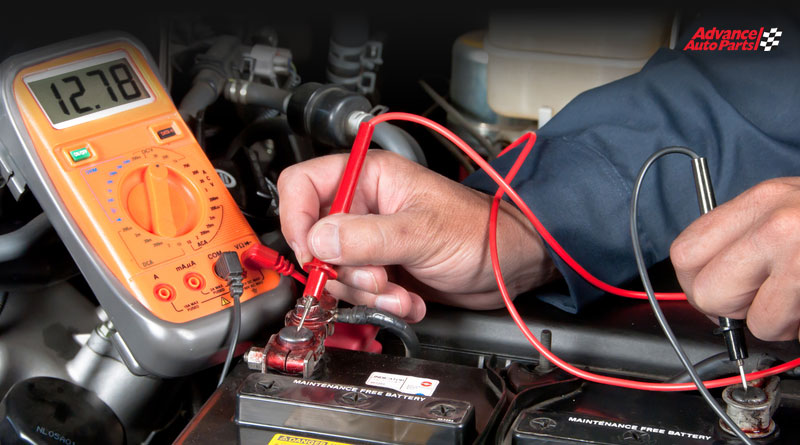How to change spark plugs is a topic that tends to get a good amount of attention from DIYers. After all, changing spark plugs is a regular maintenance item. Even if you spend extra cash on the best iridium spark plugs and install them expertly, if you don't replace the spark plug wires at the same time you're probably wasting both time and money. If the wires don’t perform well, engine performance and gas mileage suffer. Here's what you need to know about changing spark plugs and wires.
Spark plug wires | Shutterstock
What can go wrong with spark plug wires
Many DIYers know how to change spark plugs but not everyone realizes that all spark plug wires aren't created equal. Spark plugs and wires are an important topic because moving electricity to the plug to produce a spark is so critically important. Using the wrong wires for your vehicle, damaged wires, or poor-quality wires will undoubtedly lead to problems down the road.
As electricity travels along the plug wires toward the plug so it can generate a spark, it’s also looking to do something else: escape. The electricity is looking for any opportunity to jump from the wire and instead head down the path of least resistance. When it finds the escape route it’s been searching for—usually in the form of missing or damaged wire insulation—the results can include engine misfire, poor fuel mileage, hard starts, rough idles and lack of power. Electricity also generates radio waves, and if the electricity escapes from the plug wires it can interfere with a vehicle’s radio and other electronics.
Spark plug wires’ insulation is what keeps the electricity from escaping. High-quality wires will have more insulation that’s made from durable components that are better able to resist wear from vibration and heat. Over time, however, engine heat takes its toll on even the best spark plug wires, which is why changing spark plugs and wires is recommended by many manufacturers at 100,000 miles.
Types of spark plug wires
There are several types of spark plug wires available with some better suited to specific vehicle manufacturers. The primary spark plug wire types include:
Distributed resistance wires
Distributed resistance wires are constructed of fiberglass-impregnated carbon. Also known as carbon core wires, they were the standard on about 95 percent of American vehicles before 1980. The carbon core creates very high resistance. Car makers rely on that high resistance to reduce radio frequency interference (RFI) “noise” generated by normal ignition system operation. RFI not only ruins radio reception, but in severe cases it can interfere with the sensors and computers used to control the engine. If your vehicle came equipped with distributed resistance wires, replace them with the same type.
Mag (magnetic resistance) wires
A shift to inductance or mag (magnetic resistance) wires accompanied the rising popularity of Asian vehicles. Featuring a spiral wound core of a copper nickel alloy, the material presents less resistance to the electricity flow, meaning less current is needed to generate the spark, while at the same time the winding pattern and materials help prevent any RFI from escaping.
Fixed resistor wires
Lastly, there are fixed resistor wires. These are often found on European vehicles and feature steel or copper wire and a resistor inside the plug boot to control interference.
Spark plug wire set
Troubleshooting spark plug wires
If you're changing spark plugs and you think your vehicle might also be having some issues caused by faulty plug wires, begin the diagnosis with a close inspection of the wires’ condition.
- Examine them for heat-induced cracks or abrasions caused by rubbing against other parts.
- Look for areas where they’ve been burned through because of contact with an exhaust manifold.
- Try examining the engine in the dark, looking for visible sparks where the electricity is escaping along the wires, and also listen for an electrical ticking sound, similar to what you hear when you receive a big static electricity shock.
- Measure the wire’s resistance with an ohmmeter. One plug wire with a resistance that’s significantly different than the other wires could indicate that’s the problem wire.
When installing new wires, make sure you’re using wires specified for your vehicle. Characteristics, such as the wire length or a boot that attaches using clips as compared to a thread-on boot, matter when it comes to performance. Also avoid problems by routing new wires in the same manner that the previous wires were routed, and by removing and replacing the wires one at a time. Using the best spark plug in the world won’t make any difference to your engine if that plug can’t get the electricity it needs, so choose and install new plug wires wisely whenever you're changing spark plugs.
If it's time for you to install spark plugs and wires, read our project guide on how to change spark plug wires. If you're ready to buy, shop for spark plug wires now.










